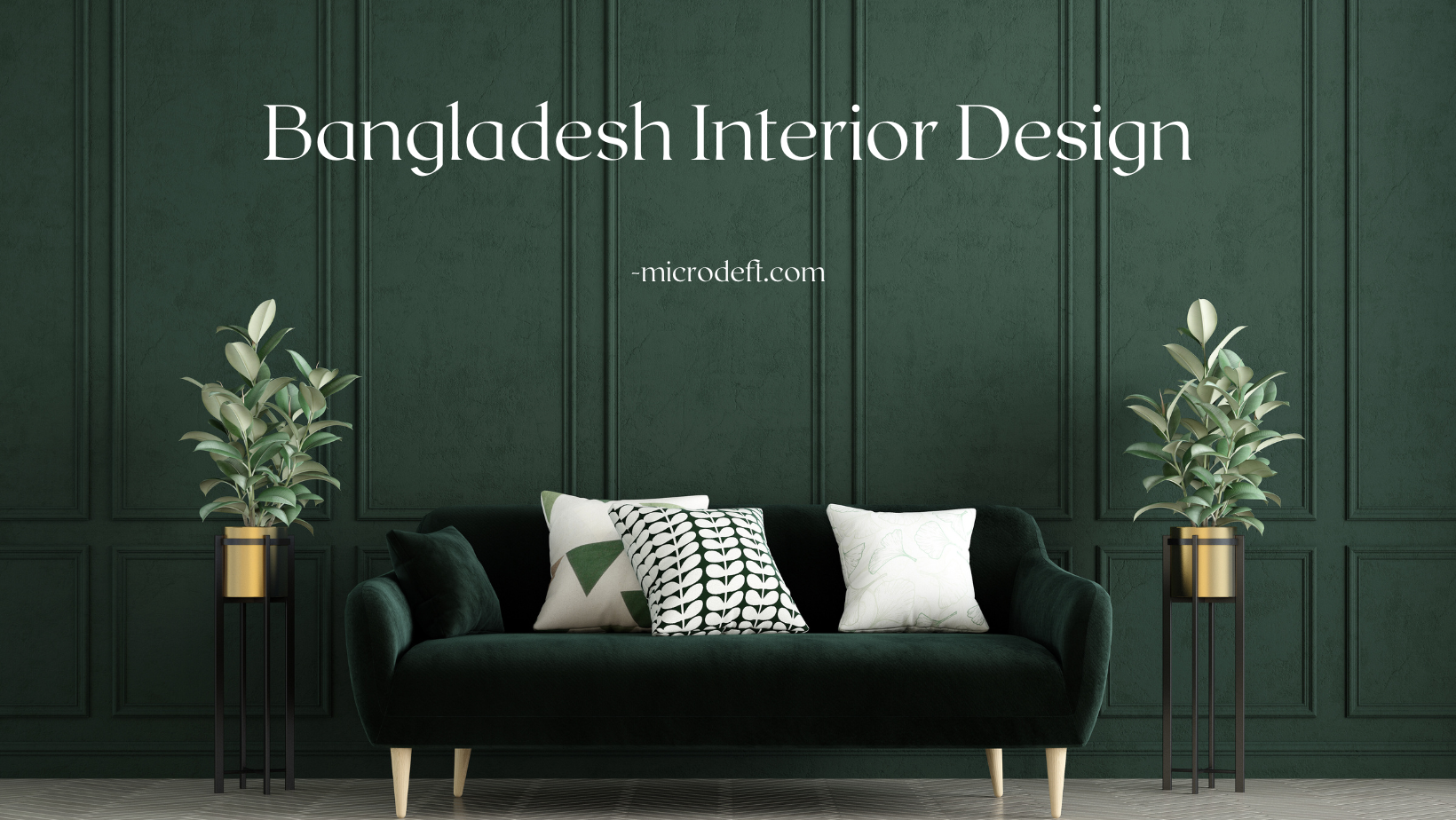Step into a Bangladeshi home, and you’ll be met with a captivating blend of vibrant colors, intricate patterns, and a touch of the unexpected. Bangladesh interior design is a tapestry woven with threads of rich cultural heritage, contemporary influences, and a dash of local ingenuity. It’s a story waiting to be told, one room at a time.
Imagine sunlight filtering through hand-painted chitra murals, illuminating handwoven dhurries that cushion your steps. Breathe in the earthy aroma of mitti, the clay used to craft stunning pottery adorning shelves. This is the essence of Bangladeshi design – a celebration of handcrafted beauty and natural materials.
But Bangladesh interior design isn’t stuck in the past. Modernity dances with tradition, reflected in sleek lines juxtaposed with antique furniture. Floor-to-ceiling windows bathe spaces in natural light, while geometric patterns add a touch of urban cool. Think minimalist kitchens with pops of turmeric yellow, or open-plan living areas adorned with vibrant jamdani textiles.
The key to this unique blend lies in understanding the Bangladeshi spirit. It’s a love for family and community, reflected in spacious living areas designed for gatherings. It’s a reverence for nature, evident in the use of natural materials and an abundance of greenery. And it’s a knack for making the most of limited space, with clever storage solutions and multi-functional furniture.
Real-life example: Take Nilima’s apartment in Dhaka. Sunlight streams through her balcony, illuminating the hand-painted chitra mural depicting a bustling village scene. Modern IKEA sofas mingle with her grandmother’s heirloom chest, its intricate carvings whispering stories of generations past. Nilima’s design is a microcosm of Bangladesh itself – a harmonious blend of old and new, tradition and modernity.
Bangladesh interior design is more than just aesthetics; it’s a way of life. It’s about creating spaces that nurture, inspire, and tell stories. It’s about embracing the warmth of family, the vibrancy of culture, and the ingenuity of a people who make the most of what they have.
So, the next time you think of Bangladesh, don’t just picture bustling streets and serene rice paddies. Imagine stepping into a home where tradition dances with modernity, where every corner whispers a story, and where the spirit of Bangladesh shines through in every handcrafted detail.
Bangladesh Interior Design: More Than Meets the Eye
Let’s explore some specific elements that make it truly unique:
- The Power of Textiles: Bangladesh is a treasure trove of textiles, from the silk opulence of jamdani to the rustic charm of hand-loomed dhurries. These aren’t just decorative accents; they’re integral parts of the design, adding pops of color, texture, and cultural storytelling. Imagine a living room draped in a kantha quilt, its intricate embroidery whispering tales of rural life. Or picture a bedroom with a jamdani bedspread, its shimmering threads catching the sunlight like a thousand captured dreams.
- The Allure of Natural Materials: Bangladeshi design embraces the warmth and beauty of natural materials like wood, bamboo, and clay. Imagine a dining table crafted from reclaimed teak, its weathered surface bearing witness to countless family gatherings. Or picture a bathroom adorned with terracotta tiles, their earthy hues evoking a sense of tranquility. These materials aren’t just sustainable; they connect you to the land and its rich history.
- Light & Space: A Masterful Dance: Bangladeshi designers are masters of playing with light and space, especially in bustling urban environments. Floor-to-ceiling windows bathe interiors in natural light, while skylights and courtyards bring the outdoors in. Clever storage solutions and multi-functional furniture maximize space, creating airy and functional living areas. Think of a living room that transforms into a guest bedroom with a hidden Murphy bed, or a kitchen with sleek built-in cabinets that disappear seamlessly into the wall.
- Sustainability with a Bangladeshi Twist: Sustainability isn’t just a trend in Bangladesh; it’s woven into the very fabric of its design. Upcycling and repurposing are second nature, with old furniture given new life and discarded materials transformed into stunning home décor. Imagine a coffee table made from reclaimed boat wood, its weathered surface bearing the whispers of countless journeys. Or picture a lamp crafted from recycled glass bottles, their vibrant hues painting the room with a warm glow.
- A Fusion of Influences: Bangladesh’s design scene is a melting pot of influences, from Mughal grandeur to colonial echoes to contemporary global trends. This fusion creates a unique aesthetic that’s both familiar and surprising. Imagine a living room with geometric patterns inspired by Mughal architecture, accented with modern furniture and pops of neon color. Or picture a bedroom with a traditional four-poster bed draped in a bohemian quilt, creating a cozy haven that transcends time and place.
These are just a few facets of the captivating world of Bangladesh interior design. It’s a story that unfolds with every corner you turn, a testament to a people’s creativity, resourcefulness, and love for their heritage. So, let Bangladesh’s design inspire you to embrace your own unique story and craft a space that reflects your soul.
Bangladesh Interior Design: A Journey Through Senses and Spaces
Let’s take a deeper dive into the sensory experience of Bangladeshi design, exploring how it transcends aesthetics and touches all five senses:
- Sight: Imagine stepping into a sun-drenched courtyard, where vibrant kantha quilts dance in the breeze against the backdrop of lush greenery. Sunlight catches the intricate carvings on wooden furniture, casting mesmerizing patterns on the walls. Every corner tells a story through its colors, textures, and patterns – a riot of blues inspired by the vast rivers, fiery oranges mirroring the sunsets, and earthy browns echoing the fertile soil.
- Touch: Feel the coolness of terracotta tiles under your bare feet as you step into a bathroom adorned with hand-painted murals. Run your fingers across the smooth surface of a hand-carved wooden chest, its history whispering through every grain. Sink into the plushness of a dhurrie woven with natural fibers, its texture grounding you in the present moment.
- Smell: The air is thick with the earthy fragrance of mitti pottery, the scent of freshly brewed chai wafting from the kitchen, and the sweet aroma of jasmine incense filling the bedroom. Each scent evokes a memory, a connection to the land and its traditions.
- Sound: The gentle tinkling of wind chimes hanging from a balcony, the rhythmic clatter of spices being ground in a mortar and pestle, the soft murmur of family chatter echoing through the house – these sounds create a symphony of everyday life, painting an aural portrait of Bangladesh’s warmth and vibrancy.
- Taste: The design extends even to the culinary experience. Imagine a dining table adorned with hand-painted ceramic plates, each dish a colorful canvas for the rich flavors of Bangladeshi cuisine. The clinking of clay cups filled with sweet chai, the aroma of freshly baked naan bread, the burst of spices in every bite – these taste sensations are an integral part of the design narrative.
Beyond the senses, Bangladesh interior design is a journey through spaces that nurture and inspire. It’s a living room that transforms into a vibrant dance floor under the glow of string lights. It’s a rooftop terrace bathed in moonlight, perfect for stargazing and sharing stories. It’s a cozy nook with a bookshelf overflowing with local literature, inviting you to lose yourself in tales of the land.
This design philosophy isn’t just about aesthetics; it’s about creating spaces that reflect the Bangladeshi spirit. It’s about celebrating community, embracing nature, and finding beauty in the everyday. It’s an invitation to slow down, connect with your senses, and experience life in all its richness.
So, are you ready to embark on your own sensory journey through Bangladesh interior design? Let’s explore specific design styles, discover hidden gems in local markets, or learn tips for incorporating this unique aesthetic into your own home.






